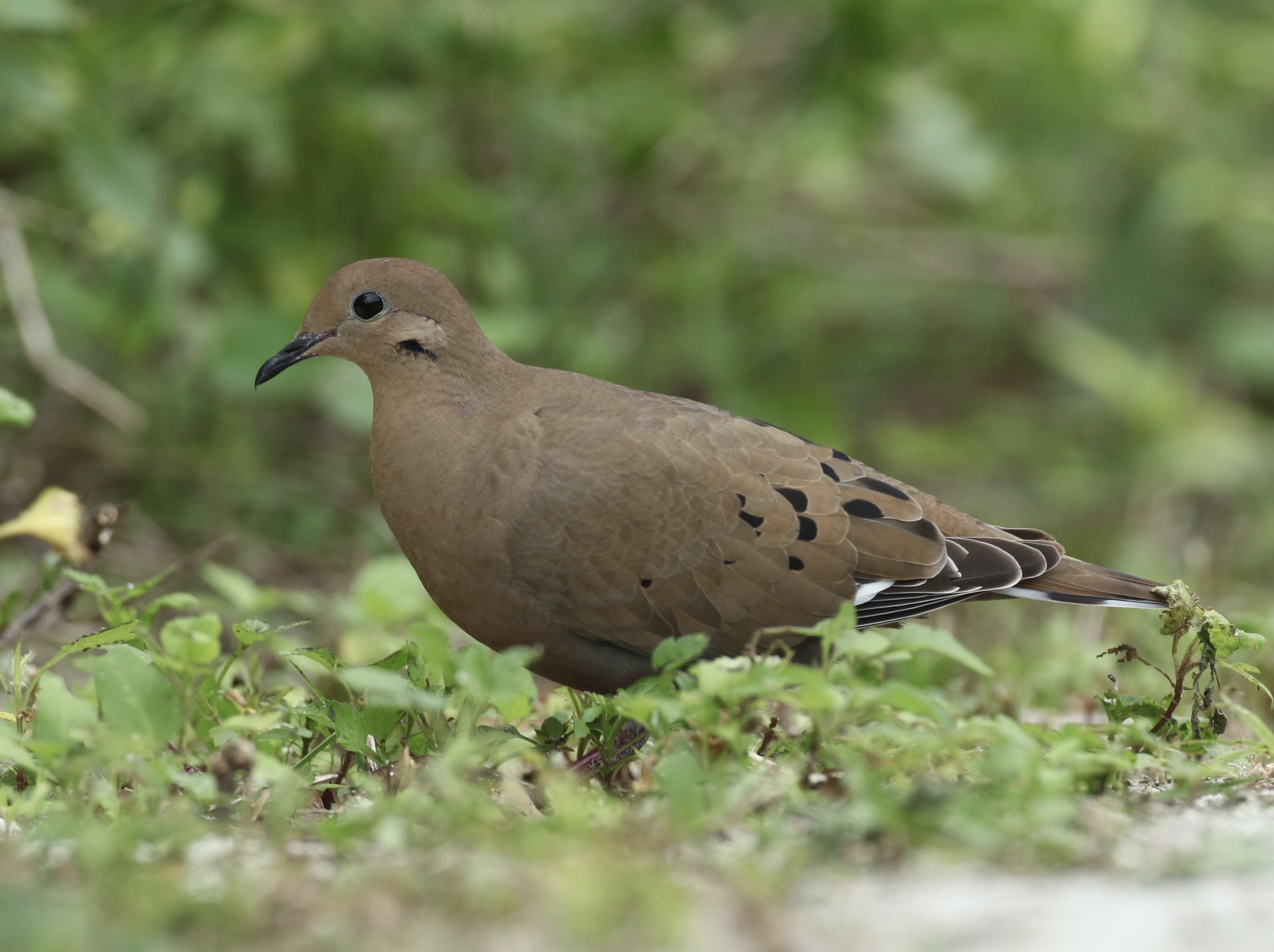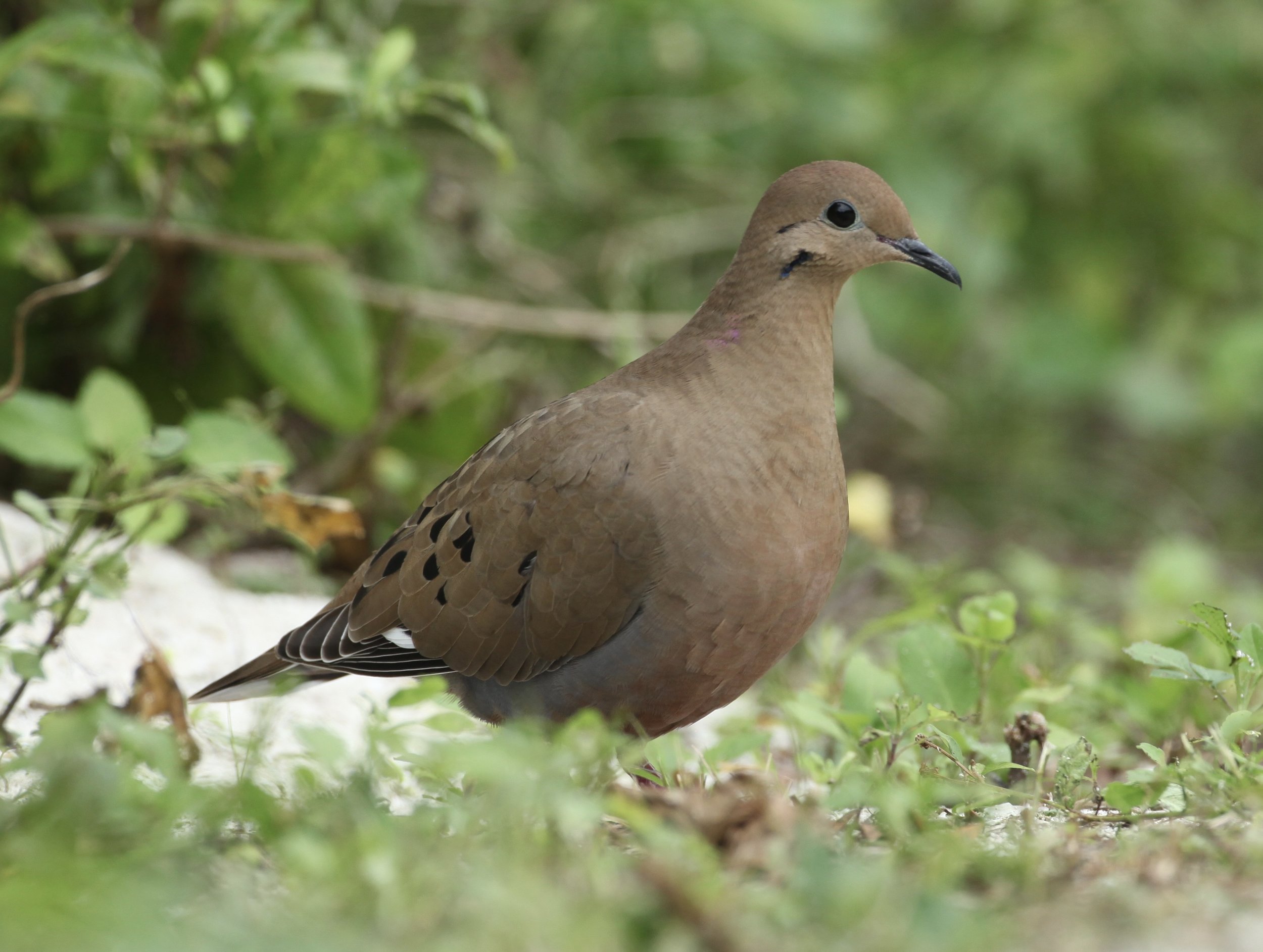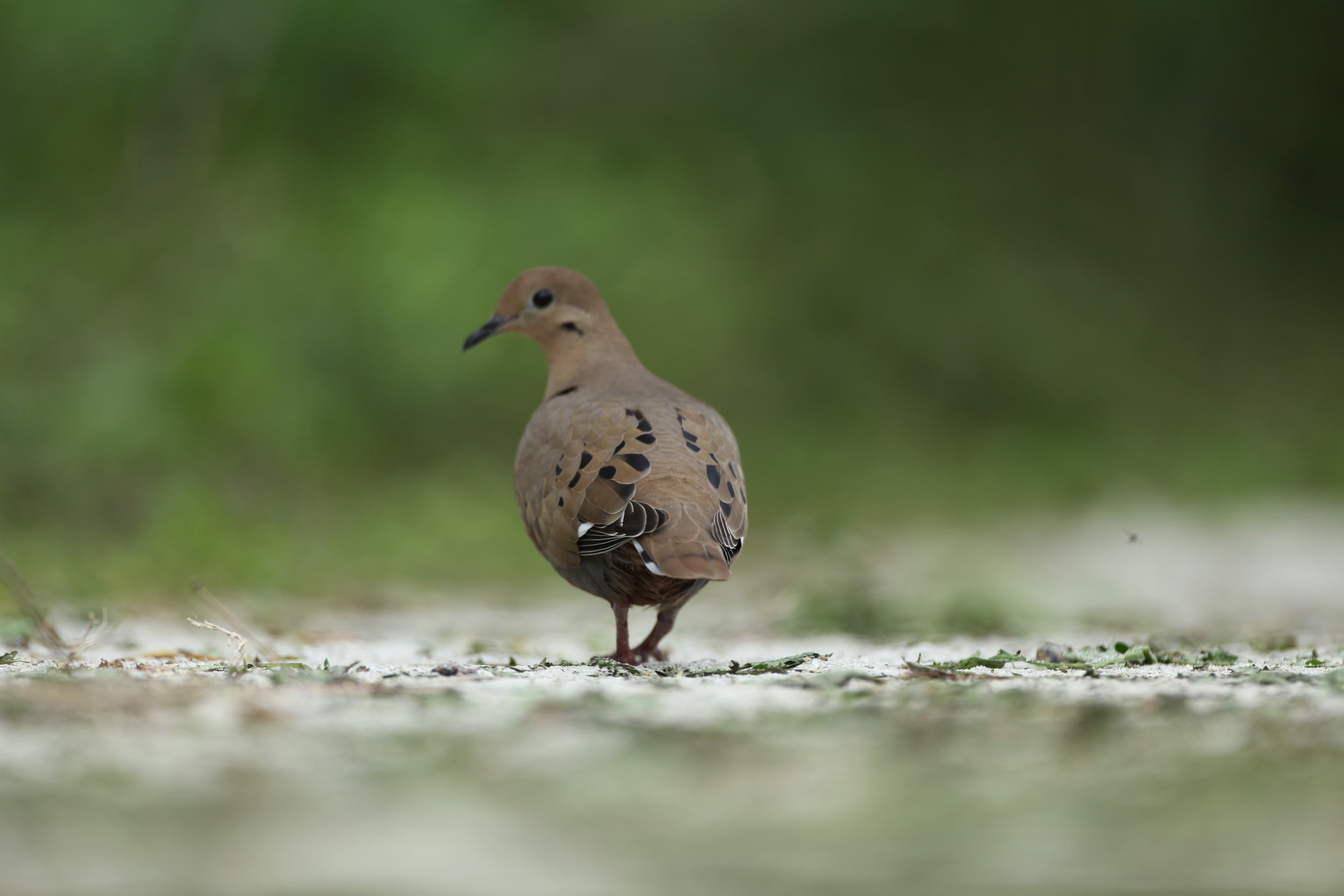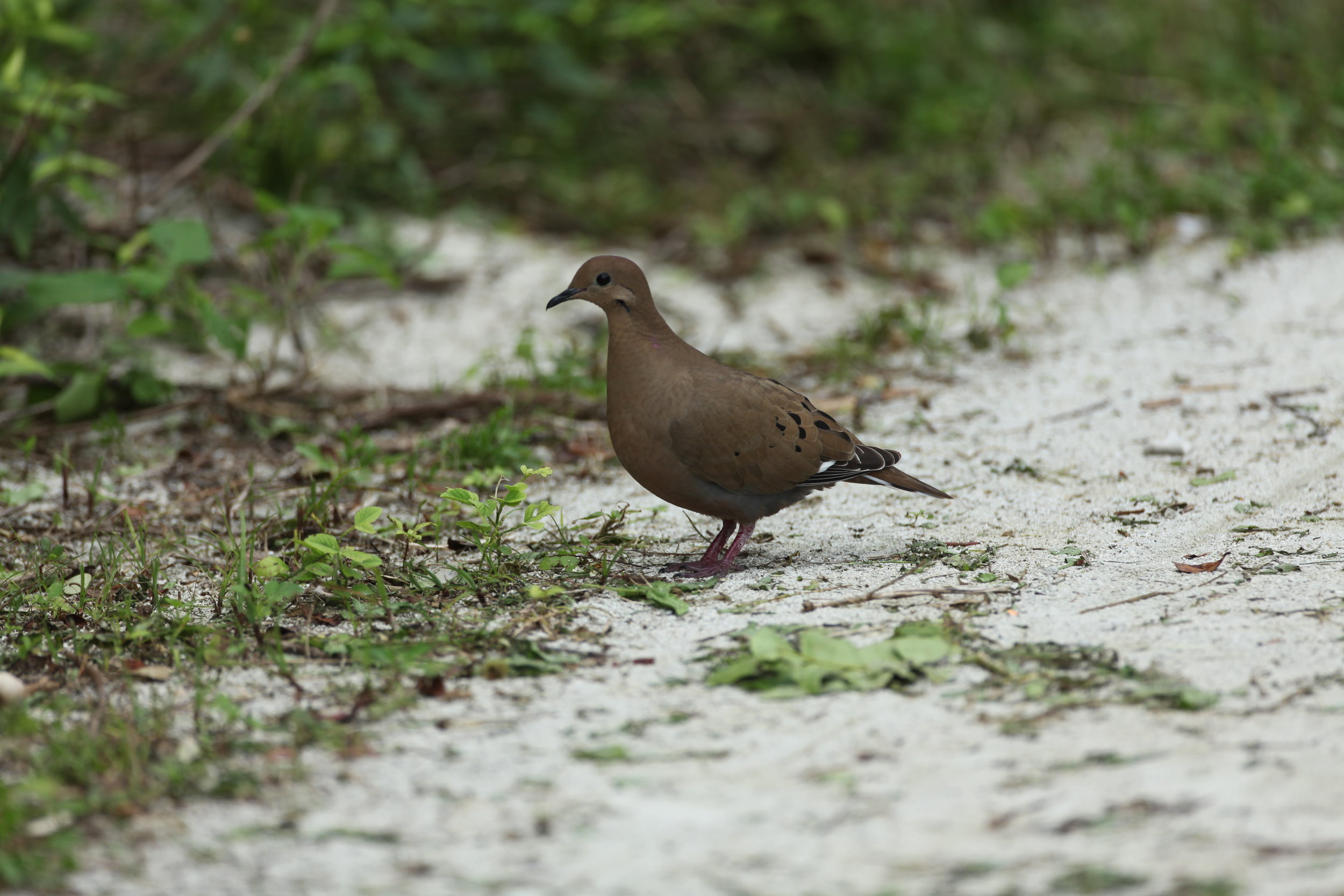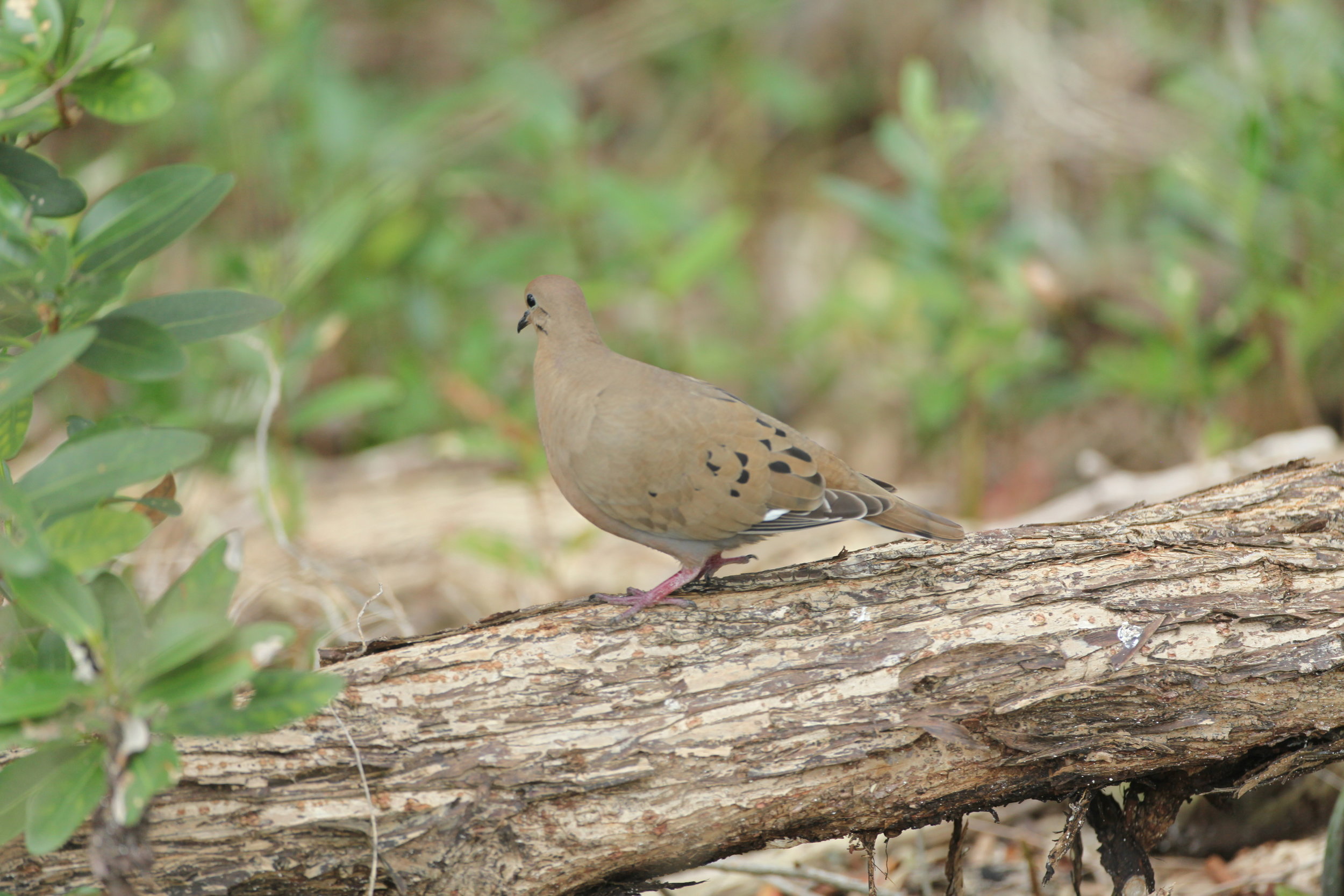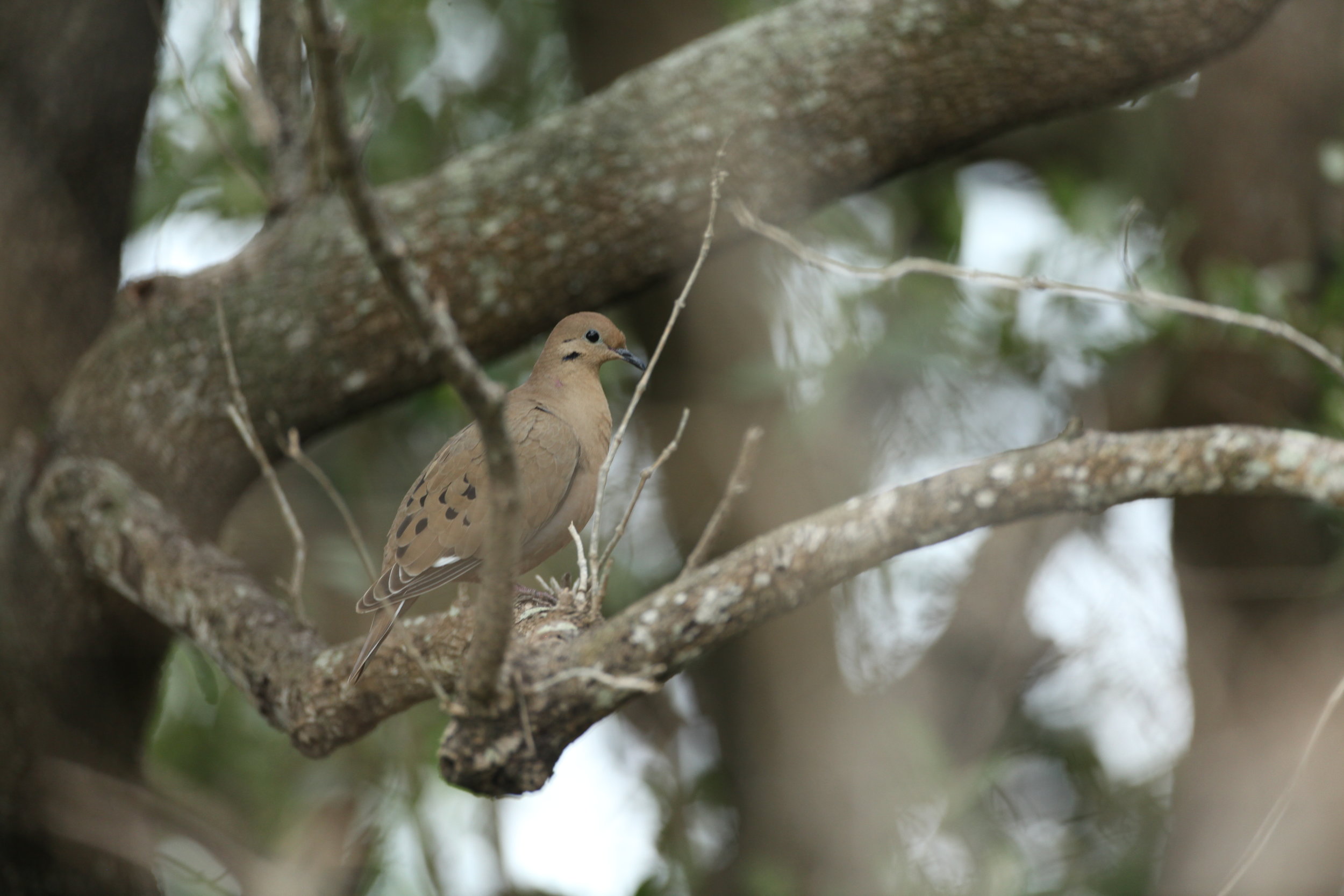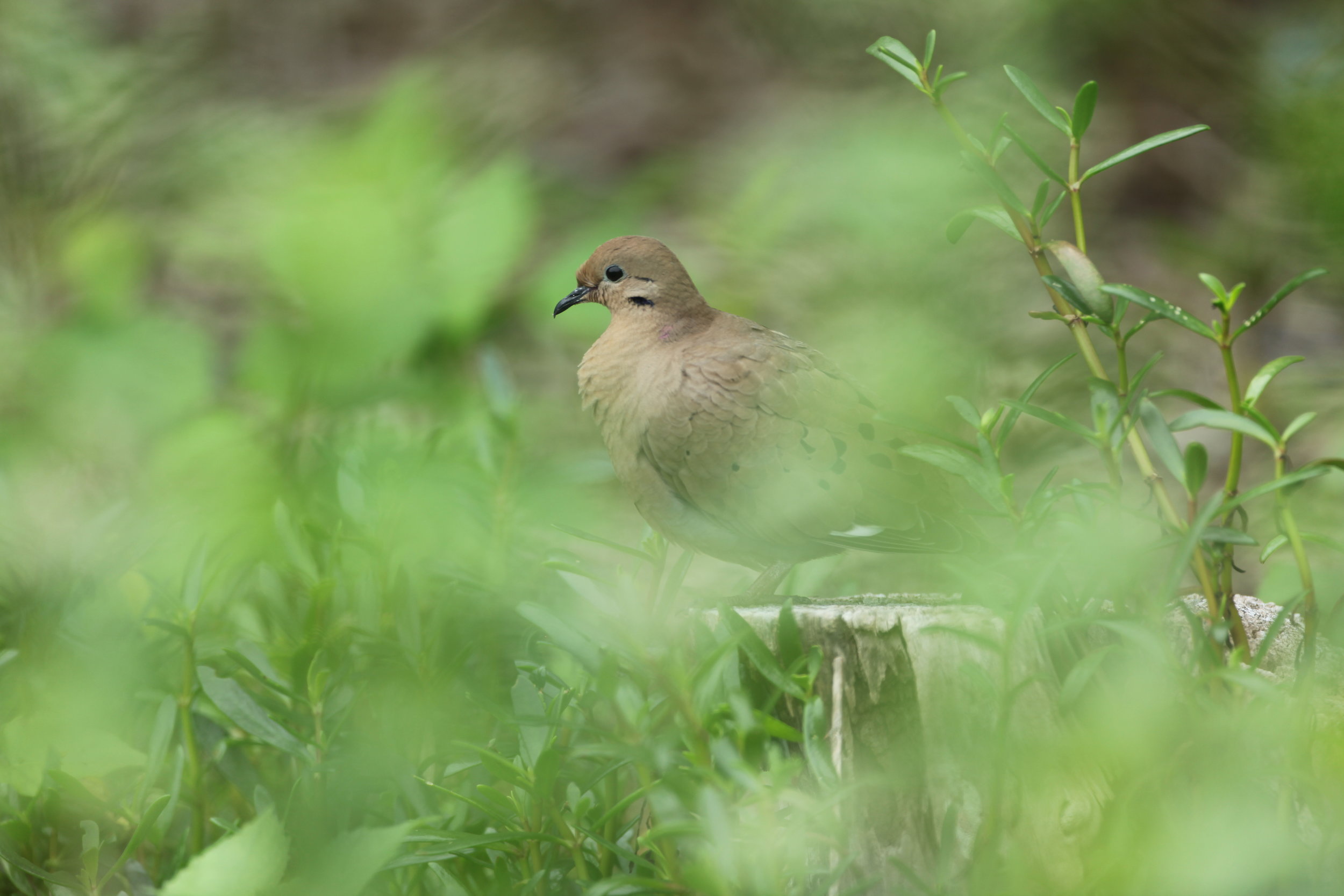Ode to the Zenaida Dove
Oh Zenaida Dove!
You filled your wings with wind and crossed the sea to appear,
and then disappear
Taking no heed of invisible lines drawn by Man
Paying no attention to color or race,
Sharing your love with all who love you back
On this week last year a Zenaida Dove appeared at Long Pine Key State Park. This Code 5 bird was the 9th record of this species in the ABA Area, with the last one being sighted in 2009. It was seen by many birders, and was observed copulating with a Mourning Dove before being seen intermittently and then disappearing in May into the unknown.
Christian's Story
I spent nearly every day of February stranded on a barrier island off the Georgia Coast. This predicament was of my own choosing, as I spent the month working as a Kitchen Assistant at The Lodge on Little St. Simons Island as I saved money to get back on the road and continue birding. At this point I knew I was doing a Big Year, and was keenly aware that 700 was within my grasp, if I saw nearly all of the common birds, most of the uncommon birds, and several key rarities. I laugh at the language used- as key rarities describes exactly what I was hoping for- rare birds showing up in the Florida Keys. I knew at this time of year I needed to be located either in south Texas, or in Florida in order to be close by to where vagrant birds would likely show up. I knew if I was close to Florida and a rare bird showed up, I would be able to chase it on my time off from work under two conditions: first I had to get off the island, and second the bird had to stick around. In a fortuitous series of events, everything worked out according to my plan.
My 8 hour shift working in the kitchen ended mid-afternoon, and as I wasn't scheduled to work dinner my work week also was over. I left the lodge and stepped outside, turning my phone on to check the weather, tides, and to plan my weekend. All thoughts of fishing vanished when my phone lit up with a string of texts, Facebook messages, and emails about a Code 5 Zenaida Dove which had just been seen in Florida. I ran back inside, connected to wifi, and began plotting my trip. I needed to get off the island immediately on a boat, and get to and from south Florida back in time to make the morning boat on the next day I had to work. It took 20 minutes to figure out the logistics, another 20 minutes to pack, and within the hour, I was departing on the last boat back to the marina at St. Simons, with an adventure ahead!
The Zenaida Dove
Superficially, the Zenaida looks like a larger, stocky Mourning dove. I'm sure it's possible that more occur in Florida and are just overlooked. It's slightly darker, has a square tail, and a white patch on the wing which is visible when the bird is feeding on the ground as it often does. I noticed that it seems to stand upright higher off the ground than a Mourning dove, and appears better-suited for foraging for seeds in the understory, holding its tail erect and moving more like a ground-dove does.
I've heard this bird's name pronounced incorrectly numerous times by birders, so in the spirit of education, I'll clear things up: Zenaida is pronounced Zen-EYE-da. The word is found in the Spanish, Portuguese, and Italian languages, often as a girl's name. Originally derived from the Greek, the word Zenaida means "of Zeus". The genus 'Zenaida' includes 7 species of doves found in the Americas, including the White-winged and Mourning dove, in addition to the Zenaida dove.
There is an account from naturalist and painter John James Audubon, who noted in his writings that this species was found with some regularity in the Florida Keys. In his travels he located a nest, and brought 2 young back with him to South Carolina, presenting them to Reverend John Bachman (who discovered his namesake warbler in South Carolina in 1832) Audubon noted that they were fed indian corn meal from the mouth quite easily, before being raised by foster pigeon parents.
Notice the small white patch on the wing?
I really enjoyed the "treasure hunt" for this bird at Long Pine Key State Park. I spent the day birding with Olaf Danielson- the first of many days in 2016 we would be searching for the same birds at the same location. Fortunately, the bird was found by another birder and word spread around the trail loop quickly, and everyone was able to have a few minutes watching the bird at point-blank range. Without fear, the bird fed right up nearly to our feet along the edge of the trail, delicately picking at seeds hanging from low grasses and shrubs. In the right light, the iridescent blue patch on the neck would flash and then disappear just as quickly, visible through my binoculars but a tough field mark to photograph.
If you pick up a bag of trash, you get a free entrance fee into Florida State Parks!
In April, I returned to Long Pine Key to search for the long-staying Black-faced grassquit. (which I never got a good enough look at to add to my year's total) I spent nearly 8 hours walking around looking for the bird, and intermittently spent some time picking up trash in the area the Zenaida dove had been seen, along the mangrove shoreline along the Golden Orb trail. While walking back along the trail, I flushed several Mourning doves, and a third dove which I nearly stepped on! As the bird winged up into the tree, I saw the square tail and white in the wings and an audible lower-pitched whistling noise made by the wings in flight, in typical dove fashion. I guessed the Zenaida dove was feeding at the edge of the trail in knee-high grasses, and I hadn't noticed the bird until it came shooting out underfoot and nearly got stepped on. What an unfortunate end it nearly met!
A quick digiscoped shot of the Zenaida dove on April 13th, after I nearly stepped on it.
What happened to the Zenaida Dove?
The last eBird report of the Zenaida dove is from May 5th, continuing to associate with a (presumed male) Mourning Dove. I recall earlier in the year someone around March 16 observed copulation between the two species, and possible nesting attempt may have ensued, as the bird disappeared for periods during the day that may alight with incubating behavior. It will be interesting to see if this bird is around this year (2017), as many of the other long-staying rarities from 2016 have been re-discovered. I suspect it may show up, but that's just a guess!
Photos
Click or tap through photos to see some of Christian's images of the Zenaida Dove
Errors in the form of spelling/grammatical mistakes are not intended, but plausible, given much of this post was written and composed on an iPhone using Siri while driving. Please contact Christian if any errors are encountered, so they may be resolved. Thank you!
Watermarked or not, the images contained in this post are property of The Birding Project, and are not subject to unlawful copying and distribution without exclusive permission from The Birding Project.




